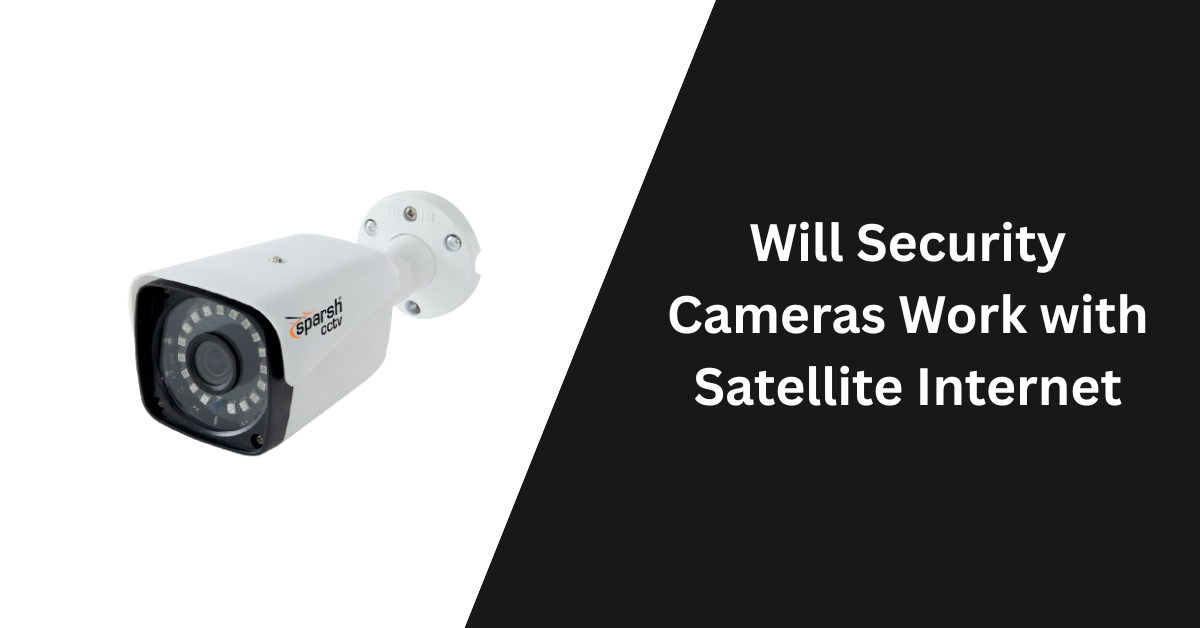Wired security cameras are often regarded as a more secure option compared to their wireless counterparts. While no system is completely immune to hacking, wired security cameras present a lower risk due to their physical connections. Understanding the potential vulnerabilities and how to address them is crucial for effective surveillance.
Many users believe that the lack of wireless signals makes wired cameras unhackable. In reality, vulnerabilities can arise from other factors, such as outdated software or improper installation. It is essential to take proactive measures to ensure optimal security.
By remaining informed about potential threats and implementing best practices, users can significantly reduce the chances of their wired systems being compromised. This article will delve into the specifics of how these systems may be hacked and the steps that can be taken to safeguard them.
Understanding Wired Security Cameras
Wired security cameras are an integral part of modern surveillance systems. This section explains how they function and highlights the advantages they bring.
How Wired Security Cameras Work
Wired security cameras operate through a direct connection to a recording device or monitor using cables. Typically, coaxial cables or Ethernet cables are used to transmit video signals and power. This connectivity allows for consistent video quality and reliability compared to wireless systems.
The camera captures images, which are converted into electronic signals and sent to a Digital Video Recorder (DVR) or Network Video Recorder (NVR). These devices then store the footage for future viewing. Wired systems often enable more advanced features like high-definition video and low-latency transmission, reducing the chance of lag or interruptions.
Benefits of Using Wired Security Systems
Wired security systems offer several notable advantages. Reliability is a significant factor, as the absence of wireless signals means they are less susceptible to interference from other devices.
Security is another crucial aspect. Wired connections are typically harder to hack than wireless signals, providing a more secure surveillance option.
Cost-effectiveness can also be seen as a benefit, as wired systems generally require fewer maintenance costs in the long run.
Lastly, installation may initially seem more complex, but once set up, wired systems tend to offer more robust and consistent performance over time.
Vulnerabilities in Wired Security Cameras
Wired security cameras, while generally more secure than their wireless counterparts, still present potential vulnerabilities. These weaknesses can be exploited through software flaws, physical access, and network configuration issues.
Potential Exploits in Camera Software
Security cameras often run on proprietary or outdated firmware. This can include not only bugs and flaws but also backdoors that malicious actors can use to gain unauthorized access.
Common issues include:
- Default Credentials: Many cameras come with factory-set usernames and passwords that users neglect to change.
- Outdated Firmware: Without regular updates, cameras become susceptible to known exploits.
Users must regularly check for updates and utilize strong, unique passwords to mitigate these risks.
Physical Vulnerabilities
Physical access to a security camera can compromise its integrity. If an attacker can reach the camera, they might disable or manipulate it.
Key concerns include:
- Tampering: An individual can cut cables or reposition the camera intentionally.
- Placement: Poor installation choices can expose cameras to physical damage.
Securing cameras in hard-to-reach or protected locations is critical to reducing physical vulnerabilities.
Network Security Weaknesses
Despite being wired, security cameras can still be vulnerable through their connections to the network. Weaknesses in network security can be exploited to gain access to the camera feed or manipulate the device.
Important factors to consider include:
- Weak Encryption: If the camera data transmission lacks strong encryption, it can be intercepted.
- Network Configuration: Improperly configured firewalls or open ports may allow unauthorized users to access camera systems.
Employing robust encryption protocols and regular network security assessments can help minimize these risks.
Common Hacking Techniques
Wired security cameras, while generally more secure than wireless options, can still be vulnerable to various hacking techniques. Understanding these methods can help users protect their systems effectively.
Man-in-the-Middle Attacks
In a man-in-the-middle attack, a hacker intercepts communication between the security camera and its intended recipient, such as a monitoring station. This can occur if the hacker gains access to the network that connects the camera to the internet or other devices.
Once positioned between the two parties, the attacker can monitor, alter, or redirect data. This may involve accessing live feeds or tampering with settings, greatly compromising security. Strong encryption protocols and secure network configurations are essential safeguards against such attacks.
Brute Force Attacks
Brute force attacks involve trial and error to guess passwords or encryption keys used to access camera systems. Attackers often use automated tools capable of trying numerous combinations quickly.
Weak or default passwords are particularly susceptible to this technique. Using complex, unique passwords, combined with account lockouts after several failed attempts, can significantly reduce vulnerability. Implementing additional security measures like two-factor authentication enhances protection against brute force attempts.
Denial of Service (DoS)
A denial of service attack seeks to render a security camera or its network unusable. This is typically achieved by overwhelming the system with excessive traffic, leading to a slowdown or complete shutdown.
While this type of attack does not directly breach the camera, it disrupts monitoring capabilities. Protecting against DoS attacks requires robust network resources and configurations that can withstand large volumes of traffic. Specialized software that detects and mitigates such threats can also be beneficial.
Prevention and Mitigation Strategies
To protect wired security cameras from hacking, implementing robust prevention and mitigation strategies is crucial. These approaches focus on strengthening security measures and maintaining the integrity of devices and networks.
Using Strong Encryption
Encryption plays a vital role in safeguarding communication between security cameras and storage devices. Employing AES (Advanced Encryption Standard) is highly recommended for securing video data. Ensuring that both data at rest and data in transit are encrypted minimizes the risk of interception.
Configuration settings should enforce the use of encryption protocols. Using RTSP (Real-Time Streaming Protocol) with encryption, like RTSPS, adds another layer of security. Regularly review and update encryption keys to prevent unauthorized access.
Regular Software Updates
Outdated software can create vulnerabilities that hackers exploit. Regularly updating camera firmware is essential to patch weaknesses. Manufacturers often release updates to fix security flaws and improve functionality.
Setting cameras to automatically check for updates can streamline this process. It is also advisable to keep any associated software, such as viewing applications, up to date. Users should prioritize vendor support and adhere to security advisories released by manufacturers.
Network Segmentation
Segmenting the network where security cameras operate enhances security by limiting access. By creating a dedicated subnet for cameras, exposure to other networked devices is reduced. This separation prevents potential attackers from moving laterally within the broader network.
Utilizing a firewall to manage traffic between segments can further enhance protection. Implementing VLANs (Virtual Local Area Networks) allows for organized and secure traffic management. Network monitoring tools can be used to detect any unauthorized attempts to access the camera network.
Monitoring and Response
Monitoring wired security cameras requires a proactive approach to detect unauthorized access and ensure a prompt response. Effective strategies include implementing intrusion detection systems and establishing real-time alerting mechanisms.
Implementing Intrusion Detection Systems
Intrusion Detection Systems (IDS) are essential for monitoring camera feeds and identifying unusual behavior. These systems analyze network traffic related to wireless communication and camera data transmissions.
Key features of IDS include:
- Anomaly Detection: Identifies discrepancies in usual patterns of activity.
- Signature-based Detection: Recognizes known threats based on specific signatures.
- Real-time Monitoring: Continuously checks for any unauthorized access attempts.
Integrating an IDS with wired security systems enhances security measures. It provides detailed logs and alerts administrators when suspicious activity is detected. This swift response capability is critical for safeguarding against potential breaches.
Real-Time Alerting Mechanisms
Real-time alerting is crucial for immediate response to potential breaches or malfunctions in wired security cameras. These mechanisms inform users of any unauthorized access attempts or system failures.
Components of effective alerting systems may include:
- Instant Notifications: Alerts via email, SMS, or push notifications for immediate awareness.
- Customizable Alerts: Users can set thresholds for alerts based on their security needs.
- Dashboard Integrations: Centralized interfaces that display alerts and camera statuses in real-time.
A robust alerting mechanism ensures that security personnel can quickly address issues, minimizing risks associated with delayed responses. By prioritizing real-time communication, security protocols can be enhanced effectively.
Future Developments in Camera Security
As security technology evolves, new methods for enhancing camera protection are emerging. Advancements in encryption and the implementation of machine learning for anomaly detection are among the most notable developments.
Advancements in Encryption
Encryption plays a vital role in securing data transmitted from wired security cameras. Modern cameras are incorporating advanced encryption standards, such as AES-256, which offers robust protection against unauthorized access.
Key features include:
- End-to-End Encryption: Ensures that data remains secure from the moment it is captured until it reaches its destination.
- Secure Key Management: Protects encryption keys from being easily accessed or intercepted.
These advancements make it significantly harder for hackers to infiltrate camera systems and manipulate footage.
Machine Learning for Anomaly Detection
Machine learning algorithms are increasingly being used to enhance security monitoring. These algorithms analyze camera footage in real-time to identify unusual patterns or behaviors that may indicate a security threat.
Key components include:
- Behavioral Analysis: AI can learn normal activity patterns, allowing for the detection of deviations.
- Alerts and Notifications: Users can receive instant alerts if suspicious behavior is detected, enabling timely responses.
These technologies not only improve response times but also reduce the number of false alarms, thereby increasing the overall effectiveness of security systems.
Hi, I’m Leonard and I have a strong interest in home security. I use many different security cameras and enjoy sharing my experiences through simple, helpful articles. My goal is to help others find the right security camera solutions to keep their homes safe.



